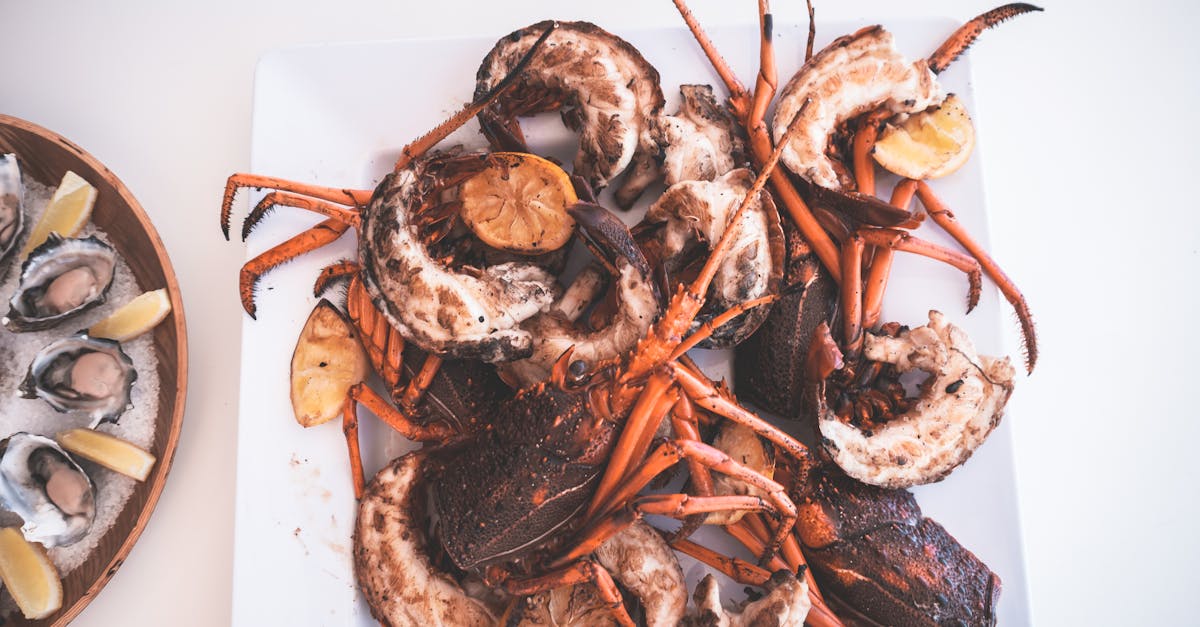
10 Best Side Dishes for Lobster Tails
Roasted Corn on the Cob
Sweet, juicy corn on the cob offers a delightful contrast to the rich flavour of lobster tails. Grilling or roasting enhances its natural sweetness while adding a slightly smoky element that complements seafood beautifully. A sprinkle of sea salt and a pat of butter can elevate this simple dish, making it an irresistible side that diners will savour with every bite.
To further enhance the experience, consider adding a dash of lime or a sprinkle of fresh herbs. These additional flavours bring brightness and freshness, tying the meal together effortlessly. With each bite, the tender kernels release their sweetness, creating a vibrant pairing alongside the succulent lobster. This side dish not only adds colour to the plate but also rounds out the meal with its satisfying crunch and flavour.
Sweetness That Pairs Beautifully
The natural sweetness of roasted corn on the cob enhances the rich, buttery flavour of lobster tails. Grilling the corn brings out its sugars, creating a delightful char that complements the dish beautifully. An additional sprinkle of sea salt and a dash of lime juice can elevate this simple side, offering a refreshing contrast to the succulent seafood.
When served alongside lobster, the corn’s sweet notes help balance the dish’s savoury elements. Topped with a smear of herb-infused butter, this vibrant side becomes not just a companion but an integral part of the meal. Each bite of tender corn provides a satisfying crunch that contrasts wonderfully with the tender lobster, making for a memorable dining experience.
Garlic Parmesan Roasted Broccoli
Roasting broccoli elevates its natural flavours while adding a delightful crunch. Tossing it with garlic and parmesan enhances its savoury profile. The combination of roasted edges and melting cheese creates a tempting contrast to the tender texture of lobster tails. This dish complements the rich meat of the lobster, balancing its sweetness with a robust, cheesy finish.
For those seeking a nutrient-rich side, broccoli packs a punch. It offers essential vitamins and minerals while remaining low in calories. This dish is ideal for any gathering or intimate dinner, providing a touch of elegance without overwhelming the palate. Its vibrant colour also adds an appealing visual element, enhancing the overall dining experience.
A Crispy and Cheesy Accompaniment
The combination of garlic and parmesan creates a delightful flavour that elevates roasted broccoli to a new level. The broccoli florets become crispy in the oven, which contrasts nicely with the rich texture of lobster tails. Drizzling them with olive oil and seasoning with salt enhances their natural taste, while the addition of garlic offers a robust aroma that makes this dish irresistible.
Baking the broccoli until it reaches a golden brown adds a visual appeal to the plate. This slightly charred exterior brings out a nutty flavour that pairs exquisitely with the buttery sweetness of lobster. Furthermore, the crunchy texture of the broccoli provides a satisfying bite, ensuring that each mouthful encapsulates a delightful medley of tastes and textures.
Creamy Coleslaw
The vibrant crunch of coleslaw adds a refreshing contrast to the tender, sweet meat of lobster tails. With its blend of finely shredded cabbage, carrots, and a creamy dressing, this side dish not only enhances the main course visually but also texturally. The coolness of the coleslaw helps balance the rich flavours of the lobster, making it an appealing choice for a seaside feast.
A well-crafted coleslaw can feature a variety of ingredients to elevate its taste. Adding ingredients such as apple slices or dried cranberries introduces a hint of sweetness, while a dash of vinegar brings a tangy punch that cuts through the creamy texture. The versatility of coleslaw allows for a personalised touch, ensuring that it complements the succulent lobster tails impeccably.
A Crunchy Contrast to Lobster
Creamy coleslaw provides a refreshing balance to the richness of lobster tails. The crispness of the cabbage and the crunch of shredded carrots create a delightful texture that complements the tender, buttery seafood. Often enhanced with a tangy dressing made from mayonnaise, vinegar, and a hint of sugar, this side dish adds a zesty contrast that brightens the overall meal.
Incorporating flavours such as apple or pineapple into coleslaw can elevate it further, introducing a natural sweetness that harmonises well with lobster. The versatility of this side allows for personalisation, making it a favourite among many. Its bright colours and appealing presentation also enhance the dining experience, ensuring that the dish not only tastes good but looks enticing on the plate.
FAQS
What are some popular side dishes to serve with lobster tails?
Some popular side dishes to serve with lobster tails include roasted corn on the cob, garlic parmesan roasted broccoli, and creamy coleslaw, among others.
Why is roasted corn on the cob a good pairing with lobster tails?
Roasted corn on the cob offers a sweetness that complements the rich and delicate flavour of lobster, creating a delightful contrast.
How can I make garlic parmesan roasted broccoli?
To make garlic parmesan roasted broccoli, simply toss broccoli florets with olive oil, minced garlic, and grated parmesan cheese, then roast in the oven until crispy.
Is creamy coleslaw a suitable side dish for lobster tails?
Yes, creamy coleslaw provides a crunchy contrast to the tender lobster, adding a refreshing element to the meal.
Can I serve multiple side dishes with lobster tails?
Absolutely! Serving multiple side dishes allows for a more varied meal experience, enhancing the overall dining experience with different flavours and textures.
Related Links
History of Lobster Tails in British CuisineWhy Sautéing Lobster Tails Enhances Their Taste
Roundup of Lobster Tail Cooking Techniques
Review of the Best Lobster Tails to Buy Online
Why You Should Buy Fresh Lobster Tails
How to Bake Lobster Tails with Garlic Butter
How to Grill Lobster Tails for Maximum Flavour
What to Serve with Lobster Tails